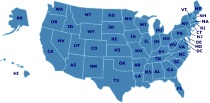How To Homeschool
What's Popular
How to Choose the Right Materials for Your Child
Ambleside Online
Time4Learning
Right-Brained Children in a Left-Brained World: Unlocking the Potential of Your ADD Child
Avoiding Fiction
Bethlehem Books
A Charlotte Mason Companion: Personal Reflections on the Gentle Art of Learning
Waldorf Without Walls
Jewish Waldorf
Designing Your Own Classical Curriculum Families
Idea Book For Cuisenaire Rods At The Intermediate Level
Everyday Mathematics
And What About College?: How Homeschooling Can Lead to Admissions to the Best Colleges & Universities
For the Children's Sake: Foundations of Education for Home and School
Catholic Heritage Curricula
Resources
Spell to Write & Read
Noah Webster's Reading Handbook
Montessori Reading
A Reason For® Spelling
Easy Grammar Systems
Basic Montessori: Learning Activities for Under-Fives
Dr. Montessori's Own Handbook
Dumbing Us Down: The Hidden Curriculum of Compulsory Schooling
Veritas Press
Happy Phonics
Montessori: A Modern Approach
Paula Polk Lillard writes both as a trained educators and as a concerned parent -- she has many years as a public school teacher, but it was her enthusiasm for the education her own child experienced in a Montessori school that led her to become a leading voice in the Montessori movement in this country.
Her book offers the clearest and most concise statement of the Montessori method of child development and education available today.
A Child's Story of America
Pattern Blocks and Boards
The Absorbent Mind
A new foreword by John Chattin-McNichols, Ph.D., President of the American Montessori Society, places this classic book in a contemporary context, offering an intelligent discussion of current thinking in child education.
Rhythms of Learning : What Waldorf Education Offers Children, Parents & Teachers (Vista Series, V. 4) (Vista Series, V. 4)
This collection is the clearest introduction to the ideas of Waldorf education currently available. "Rhythms of Learning" contains Steiner's most important lectures on teaching and child development. It is an excellent resource for everyone interested in taking education successfully into the 21st century.
Teach Your Own: The John Holt Book Of Homeschooling
Bob Books
The Letter Factory Game
Freedom and Beyond (Innovators in Education)
Homeschooling: The Teen Years : Your Complete Guide to Successfully Homeschooling the 13- to 18- Year-Old (Prima Home Learning Library)
The guide is neatly packaged and easy to read in the same style of its sister publications, Homeschooling: The Early Years and Homeschooling: The Middle Years. A large collection of lists and quick tips offer everything from the top 10 books for teens and the most popular math programs to money-saver suggestions such as joining a local college's foreign-language club and asking for discarded equipment from local schools. The last chapter contains two college application essays written by teenage homeschoolers. It also provides reassuring information about diplomas. Many universities follow Harvard's policy of not requiring a diploma, but if you or your homeschooling support group do issue one, your teenager can answer "yes" to the diploma question on most job applications--a fact sure to illicit a collective sigh of relief from thousands of parents who homeschool their teens. --Jodi Mailander Farrell
English from the Roots Up
Visual Brainstorms
A Reason For® Handwriting
LeapPad Game - Mind Wars Jr. Interactive Game
Bead Sequencing Set
Smart Mouth
Smart Mouth is a quick-thinking shout-it-out hilarious word game that helps build vocabulary skills. It includes variations of the rules for category play and for younger players. Players slide the Letter Getter forward and back to get two letters. The first player to shout out a word of five or more letters using those letters wins the round. The game includes tips for teachers. This is a fun game to play with children and adults together.
TruthQuest History
Free to Learn: Introducing Steiner Waldorf Earkt Childhood Education
Topics include:
· How kindergarten enables healthy child development
· What is movement based learning
· Why creative play is so crucial
· How children learn through imitation and rhythm
· When children are ready for school
· How to get support for parenting and daycare
Free to Learn is a unique guide to the principles and methods of Waldorf early education, drawing on kindergarten experience from around the world, with stories, helpful insights, lively observations, and pictures.
Total Language Plus
Sing, Spell, Read & Write
Featured Resources
As an Amazon Associate, we earn from qualifying purchases. We get commissions for purchases made through links on this site.
























